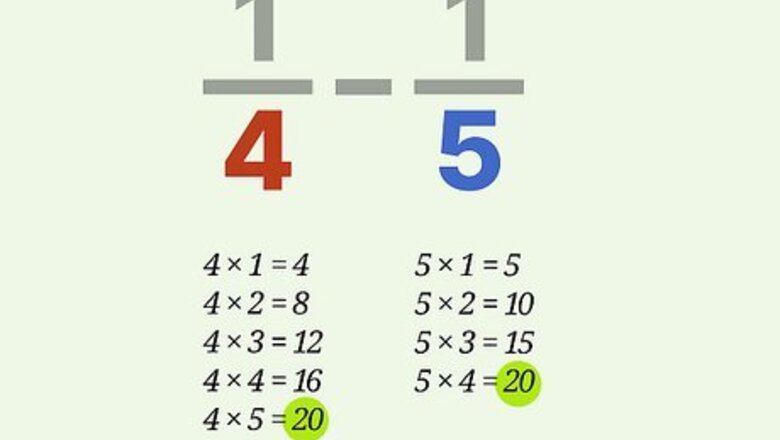
views
Finding the Least Common Multiple and Subtracting
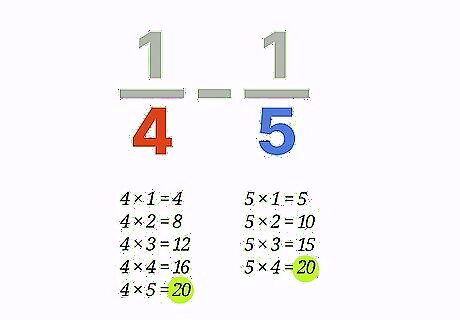
List multiples of the denominators if necessary. If the denominators of your fractions aren't the same, you'll need to make them the same. List the multiples of each denominator so you can find a number that both denominators have in common. For example, if you're doing 1/4 - 1/5, list all the multiples of 4 and 5 to find 20. Since the multiples of 4 include 4, 8, 12, 16, 20 and the multiples of 5 include 5, 10, 15, and 20, 20 is the lowest number they have in common. If the denominators are already the same, you can skip straight to subtracting the numerators.
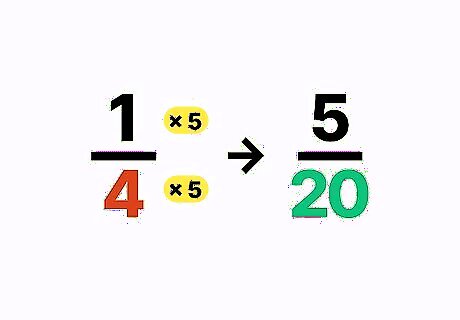
Multiply both the numerator and denominator to get like denominators. Once you've found the lowest common multiple for your unlike fractions, multiply the fraction so the denominator becomes the least common multiple. For example, multiply 1/4 by 5 to get a denominator of 20. You'll also need to multiply the numerator by 5, so 1/4 becomes 5/20.
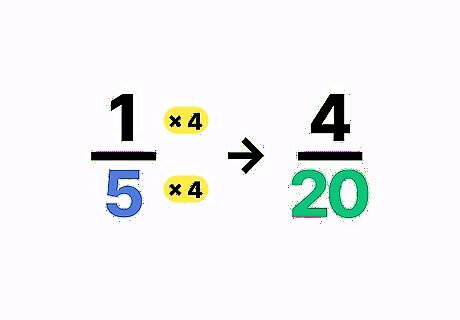
Make equivalent fractions for all of the fractions in the equation. Keep in mind that if you adjust 1 of the fractions in the problem, you'll need to adjust all of the fractions so they're equivalent. For example, if you've adjusted 1/4 to become 5/20, multiply the 1/5 by 4 to get 4/20. The original problem 1/4 - 1/5 becomes 5/20 - 4/20.
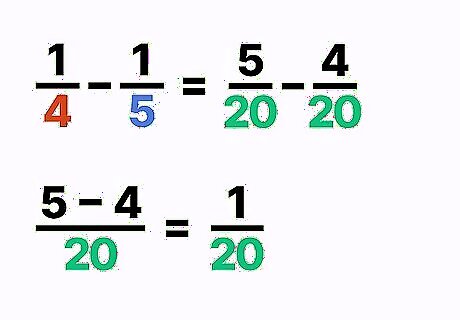
Subtract the numerators and keep the denominator the same. If you started with denominators that were the same or you made equivalent fractions with the same denominator, subtract the numerators. Write the answer and then write the denominator underneath it. Remember not to subtract the denominators as well. For example, 5/20 - 4/20 = 1/20.
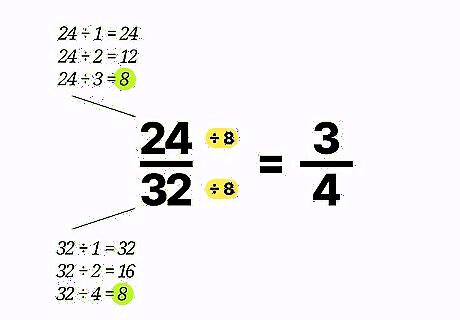
Simplify your answer. Once you have your answer, check to see if you can simplify it. Find the greatest common factor of the numerator and denominator and divide both numbers by it. For example, if you had an answer of 24/32, the greatest common factor is 8. Divide both numbers by 8 to get 3/4. Depending on your answer, you may not be able to simplify it. For example, 1/20 can't be reduced further. EXPERT TIP Joseph Meyer Joseph Meyer Math Teacher Joseph Meyer is a High School Math Teacher based in Pittsburgh, Pennsylvania. He is an educator at City Charter High School, where he has been teaching for over 7 years. Joseph is also the founder of Sandbox Math, an online learning community dedicated to helping students succeed in Algebra. His site is set apart by its focus on fostering genuine comprehension through step-by-step understanding (instead of just getting the correct final answer), enabling learners to identify and overcome misunderstandings and confidently take on any test they face. He received his MA in Physics from Case Western Reserve University and his BA in Physics from Baldwin Wallace University. Joseph Meyer Joseph Meyer Math Teacher Simplifying a fraction just changes the way the fraction is written. To simplify a fraction, you can cancel out the greatest common factor from the numerator and denominator or convert an improper fraction to a mixed number. This doesn't change the inherent value of the fraction.
Subtracting Mixed Numbers
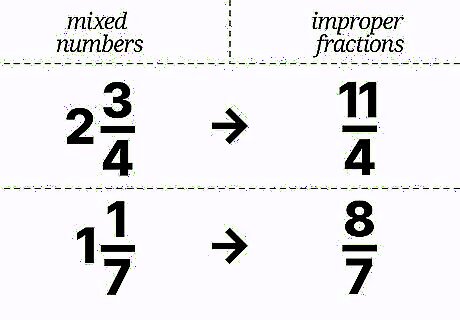
Change the mixed numbers into improper fractions. Mixed numbers are whole numbers with fractions. To make it easier to subtract, turn the whole numbers into fractions. This will mean that the numerator will be larger than the denominator. For example, 2 3/4 - 1 1/7 will become 11/4 - 8/7.
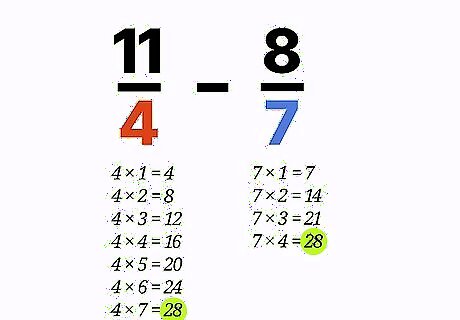
Find a common denominator if necessary. Find the lowest common multiple of both denominators so you can make a like denominator for the fractions. For example, if you're doing 11/4 - 8/7, list all the multiples of 4 and 7 to find 28. Since the multiples of 4 include 4, 8, 12, 16, 20, 24, 28 and the multiples of 7 include 7, 14, 21, and 28, 28 is the lowest number they have in common.
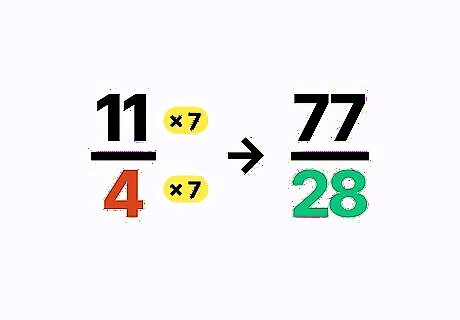
Make equivalent fractions if you have to change the denominators. You'll need to make denominators become the lowest common multiple. To do this, multiply the entire fraction. For example, to make the denominator for 11/4 become 28, multiply the fraction by 7. The fraction will become 77/28.
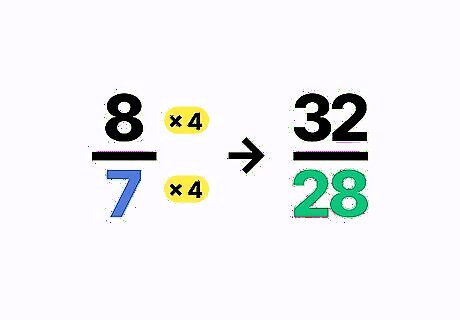
Adjust all of the fractions in the problem to make them equivalent. If you've changed the denominator for 1 of the fractions in your problem, you'll need to adjust the other fractions so their ratios are still equal to the original problem. For example, if you've adjusted 11/4 to become 77/28, multiply the 8/7 by 4 to get 32/28. The problem 11/4 - 8/7 becomes 77/28 - 32/28.
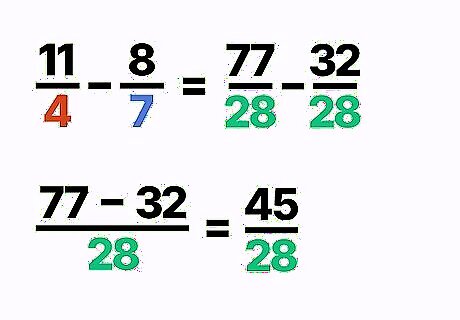
Subtract the numerators and keep the denominator the same. If the denominators were the same to begin with or you've made equivalent fractions, you can now subtract the numerators. Write the answer and place it over the denominator. Remember not to subtract the denominator. For example, 77/28 - 32/28 = 45/28.
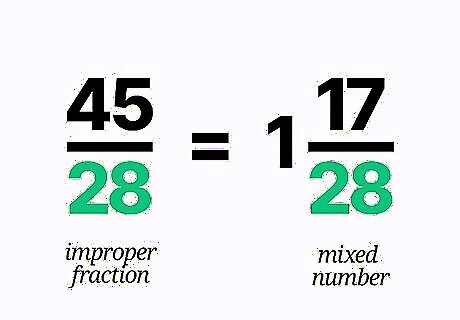
Simplify the answer. You'll probably need to change the answer into a mixed number. Start by dividing the numerator by the denominator to get a whole number. Then write how many parts you have left. This number will be the numerator. Place the numerator over the same denominator. Reduce this fraction if you can. For example, 45/28 becomes 1 17/28 because 28 goes into 45 1 time and has 17 parts of 28 left over.
















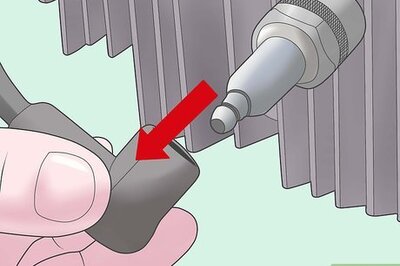
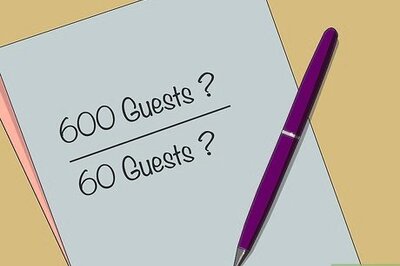


Comments
0 comment